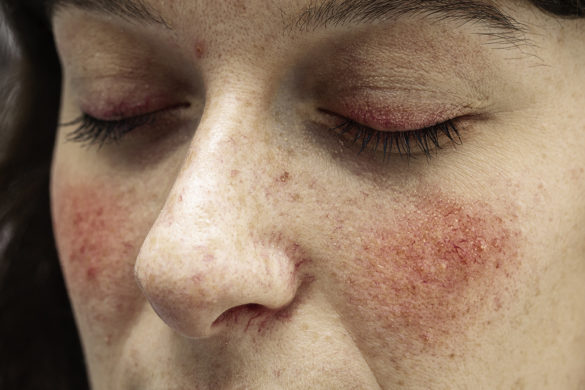
- 1 in 10 people suffer from rosacea, although it is often misdiagnosed as acne. Rosacea is characterised by a red rash, and affected skin can often show signs of broken blood vessels, red spots and pus-filled spots.
- There is no proven cure for rosacea, but there are however long-term treatments which are safe and effective. Several antibiotics in cream, lotion, gel or tablet form are effective for the inflammation (bumps and pus spots) of rosacea but, they work less well for the flushing and broken vessels. On the other hand, laser treatments work better for the flushing and vessels than for the inflammation.
- Flare ups are brought on by different triggers for different people. Triggers can range from sunlight, stress, and food and drink.
- Underlying causes of rosacea are not fully understood. It is believed that it results from a combination of hormonal, genetic and environmental factors as well as individual triggers.
- Sun exposure and high temperatures are the most common causes of flare-ups. It is important to wear sun cream whenever possible, even when it is overcast. A sun cream with a sun protection factor (SPF) of at least 30 is recommended. A broad-spectrum sun cream that protects against UVA and UVB light should be used.
- Many suggest that rosacea is a type of allergy. No allergic mechanism has been identified in creating rosacea. Certain foods and alcohol can worsen rosacea, giving the false impression that an allergic reaction is responsible. The commonest implicated foods are spicy meals and chocolate.
- Only a small percentage of rosacea suffers improve on sun exposure and the increased risk of skin cancer from sun bed use makes this a potentially dangerous practice. Much diagnostic confusion can exist between acne vulgaris which frequently improves in Summer, and acne rosacea. It is this confusion which has led some people to report that the appearance of rosacea may improve with sun bed use.
- Rosacea doesn’t just appear on the face. Rosacea can also appear on the scalp, upper chest, upper back and limbs.


